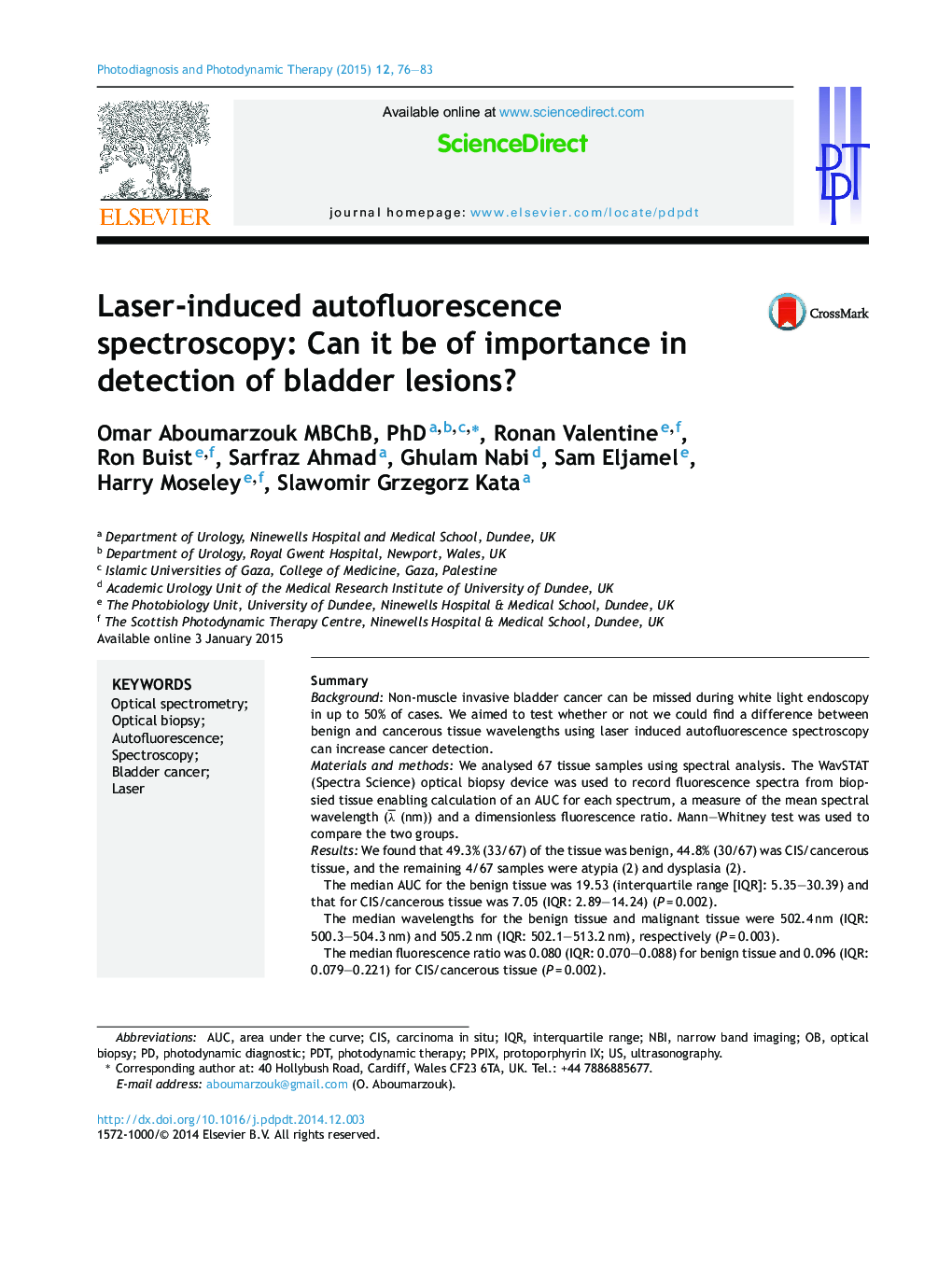| کد مقاله | کد نشریه | سال انتشار | مقاله انگلیسی | نسخه تمام متن |
|---|---|---|---|---|
| 6154849 | 1246344 | 2015 | 8 صفحه PDF | دانلود رایگان |
- There were significant statistical differences between the median AUC calculations for the benign and cancerous tissue.
- There were significant statistical differences between the median wavelengths for the benign and cancerous tissue.
- There were significant statistical differences between the fluorescence ratios between the benign and cancerous tissue.
- There seems to be a role for optical spectroscopy in verifying bladder lesions.
SummaryBackgroundNon-muscle invasive bladder cancer can be missed during white light endoscopy in up to 50% of cases. We aimed to test whether or not we could find a difference between benign and cancerous tissue wavelengths using laser induced autofluorescence spectroscopy can increase cancer detection.Materials and methodsWe analysed 67 tissue samples using spectral analysis. The WavSTAT (Spectra Science) optical biopsy device was used to record fluorescence spectra from biopsied tissue enabling calculation of an AUC for each spectrum, a measure of the mean spectral wavelength (λ¯ (nm)) and a dimensionless fluorescence ratio. Mann-Whitney test was used to compare the two groups.ResultsWe found that 49.3% (33/67) of the tissue was benign, 44.8% (30/67) was CIS/cancerous tissue, and the remaining 4/67 samples were atypia (2) and dysplasia (2).The median AUC for the benign tissue was 19.53 (interquartile range [IQR]: 5.35-30.39) and that for CIS/cancerous tissue was 7.05 (IQR: 2.89-14.24) (P = 0.002).The median wavelengths for the benign tissue and malignant tissue were 502.4 nm (IQR: 500.3-504.3 nm) and 505.2 nm (IQR: 502.1-513.2 nm), respectively (P = 0.003).The median fluorescence ratio was 0.080 (IQR: 0.070-0.088) for benign tissue and 0.096 (IQR: 0.079-0.221) for CIS/cancerous tissue (P = 0.002).ConclusionsWe found statistical differences between the median AUC calculations and median wavelengths for the benign and cancerous tissue. We also found a statistical difference between the fluorescence ratios between the two tissue types. There seems to be a role for optical spectroscopy in verifying bladder lesions.
Journal: Photodiagnosis and Photodynamic Therapy - Volume 12, Issue 1, March 2015, Pages 76-83
